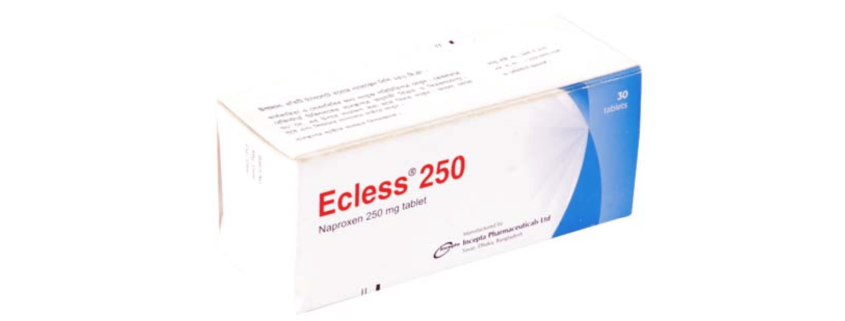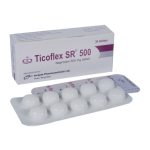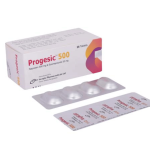Ecless(Naproxen)

Therapeutic Group: Analgesic, Anti Inflammatory
Presentation
Ecless 250 tablet: Each tablet contains Naproxen BP 250 mg.
Ecless 500 tablet: Each tablet contains Naproxen BP 500 mg.
Ecless suspension: Each 5 ml suspension contains Naproxen BP 125 mg.
Ecless 15 gm gel: Each gram gel contains Naproxen BP 100 mg.
Ecless SR 500 tablet: Each SR tablet contains Naproxen BP 500 mg.
Description
Naproxen is a nonsteroidal anti-inflammatory drug with analgesic and antipyretic properties. Naproxen works by reducing the levels of prostaglandins, chemicals that are responsible for pain, fever and inflammation. Naproxen blocks the enzyme that makes prostaglandins (cyclooxygenase), resulting in lower concentrations of prostaglandins. As a consequence, inflammation, pain and fever are reduced.
Indications
Naproxen is indicated for its anti-inflammatory and analgesic action in the treatment of rheumatoid arthritis, osteoarthritis (degenerative arthritis), ankylosing spondylitis, juvenile rheumatoid arthritis, acute gout, acute musculoskeletal disorders, post operative pain and dysmenorrhoea. It is also indicated in the relief of mild to moderate pain, and for the treatment of tendonitis and bursitis.
Dosage & Administration
Naproxen tablet
Adults
For rheumatoid arthritis, osteoarthritis and ankylosing spondylitis
The usual dose is 500-1000 mg per day taken in 2 doses at 12 hours intervals after meals.
For acute gout
750 mg should be given initially, followed in 8 hours with 500 mg, and thereafter 250 mg at 12 hours intervals until the attack has passed.
For dysmennorhoea
500 mg should be given initially, followed by 250 mg at 6-8 hour intervals for up to 5 days.
For analgesia and acute muscular skeletal disorders
500 mg should be given initially, followed by 250 mg at 6-8 hour intervals.
Children over 5 years
For juvenile rheumatoid arthritis
10mg/kg/day given as 2 divided doses at 12 hour intervals.
SR tablet
For rheumatoid arthritis, osteoarthritis and ankylosing spondylitis 500 mg or 1000 mg (500 mg x 2) SR tablet once daily (morning or evening) after meals. SR tablet is also indicated after the acute condition is subsided for long term use.
Naproxen suspension
Adults
Dosage is the same as Naproxen tablet.
Children over 5 years
10 mg/kg/day given as 2 divided doses at 12 hours intervals.
Naproxen gel
2-6 times a day as required.
Side Effects
The most common side effects from Naproxen are rash, ringing in the ears, headaches, dizziness, drowsiness, abdominal pain, nausea, diarrhea, constipation, heartburn, fluid retention and shortness of breath. Naproxen also may cause stomach and intestinal bleeding and ulcers.
Precautions
Serious GI toxicity such as bleeding, ulceration, and perforation, can occur at any time, with or without warning symptoms, in patients treated chronically with NSAID therapy. Although minor upper GI problems, such as dyspepsia, are common, usually developing early in therapy, physicians should remain alert for ulcerations and bleeding in patients treated chronically with NSAIDs even in the absence of previous GI tract symptoms.
Use in Pregnancy & Lactation
Pregnancy: Pregnancy Category B
Naproxen should be used during pregnancy only if the potential benefits justify the potential risks to the fetus.
Nursing mother: The Naproxen has been found in the milk of lactating women. Because of the possible adverse effects of prostaglandin-inhibiting drugs on neonates, use in nursing mothers should be avoided.
Drug Interaction
Naproxen may increase the blood levels of lithium by reducing the excretion of lithium by the kidneys. Increased levels of lithium may lead to lithium toxicity. Naproxen may reduce the blood pressure lowering effects of blood pressure medications. When naproxen is used in combination with aminoglycosides (e.g., gentamicin) the blood levels of the aminoglycoside may increase. This may lead to more aminoglycoside-related side effects. Individuals taking anticoagulants (e.g., Warfarin) should avoid naproxen because naproxen also thins the
blood, and excessive blood thinning may lead to bleeding.
Over Dose
Naproxen overdosage may be characterized by drowsiness, heartburn, indigestion, nausea, or vomiting. In animals 0.5 g/kg of activated charcoal was effective in reducing plasma levels of Naproxen. Hemodialysis does not decrease the plasma concentration of Naproxen.
Storage
Do not store above 30 degree C. Keep away from light and out of the reach of children.
Commercial Pack
Ecless 250 tablet: Each box contains 3 blister strips of 10 tablets.
Ecless 500 tablet: Each box contains 3 blister strips of 10 tablets.
Ecless 50 ml suspension: Each bottle contains 50 ml suspension.
Ecless 15 gm gel: Each tube contains 15 gm of Naproxen gel.
Ecless SR 500 tablet: Each box contains 3 blister strips of 10 tablets.



